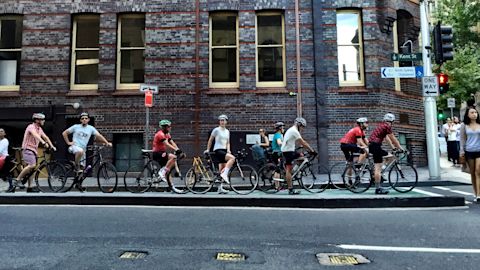Our latest traffic counts show huge increases of people riding bikes now more cycleways are connected across the city.
Kent Street cycleway (Druitt Street crossing) in the city centre has seen a staggering 603% increase since counts began in 2010.
The completion of Kent Street and cycleways opening on Liverpool and Castlereagh streets in 2015 created a safe and separated north-south connection from Sydney Harbour Bridge to Green Square.
This opened up a new transport option for people like Sally, who rides along Kent Street each work day.
“I ride from Randwick to the city every day and use the Bourke, Liverpool and Kent Street cycleways. It is by far the quickest, most enjoyable and most reliable way to get in and out of town quickly as a working mum,” Sally says.
“The cycleways allow me to easily and safely travel through the busy heart of the city.”
Established routes have also seen exceptional growth in the October 2016 counts.
Along Bourke Street (near Phelps Street), 1,007 trips were counted in the morning (6am to 9am) and afternoon (4pm to 7pm) peaks, growing 371% since 2010. And at King Street (near Kent Street) there were 2,165 trips, growing 322% since 2010.
With trains and buses often full to capacity, and light rail construction along George Street in full swing, our city’s transport network is stretched.
More people on bikes helps alleviate pressure on the city’s transport network with light rail construction along George Street and trains and buses often full. We’re working on new cycleway connections to make it easier for people to ride every day.
More information on the counts
Matrix Transport and Travel Data independently conduct counts at 100 intersections across the City of Sydney local area. The figures above represent the total number of movements during the morning (6am to 9am) and afternoon (4pm to 7pm) peaks on 1 day.
The total number of movements counted in October 2016 was 51,133. A 5% increase in the past year and a 98% increase since counts began in 2010.



